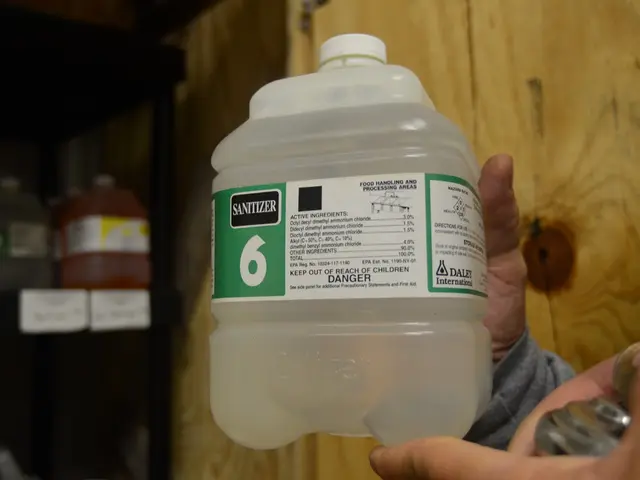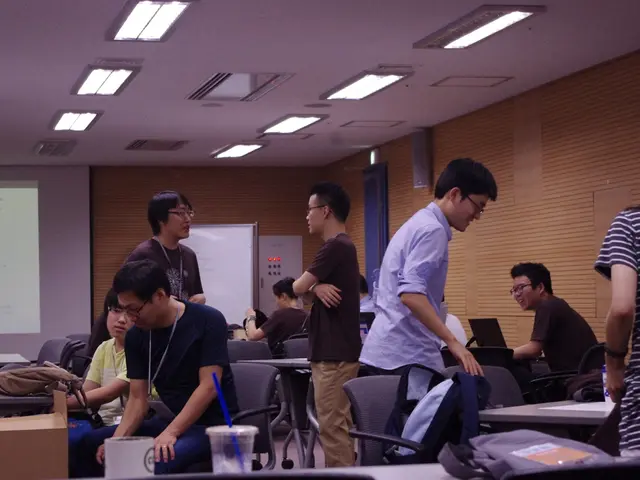Switzerland's Blatten Village Buried by Avalanche: What We Know
The glacier's destruction: Triggers and future impacts on other icesheets.
The freakish avalanche that obliterated the entire village of Blatten, Switzerland, was an event three decades in the making. Here's the lowdown on how it all went down, the specific triggers, and the potential role of climate change.
The Avalanche Explained
The disaster was long on the horizon. "The area has been under constant surveillance for 30 years, and it's well-known that it's potentially unstable," according to Jens Turowski of the GFZ Helmholtz Centre for Geosciences in Potsdam.
Last week, massive rocks the size of four meters started shifting on Kleine Nesthorn Mountain in a matter of one to two days – a speed barely seen before. The cascading disaster sent three million cubic meters of rock hurtling onto the Birch glacier in several instances. The sheer weight of nine million tons of rock finally pushed the ice of the glacier down, creating an enormous mound.
Imagine a large block of butter resting on a slope: when pressure is applied, the bottom bulges out. Something similar happened to the glacier, with part of it breaking off and sliding down onto the village on Wednesday, carrying most of the rock in tow.
The Specific Triggers
Avalanches aren't sudden occurrences. As Turowski explains, "It's a process that unfolds over decades, centuries, or even millennia." Initially, weathering and cracks in the rock set the stage for possible instability. But what set off this specific avalanche isn't entirely clear yet.
One possibility is that the permafrost thawed due to the rising temperatures. Permafrost functions like a natural adhesive, providing additional support for the rock. When it warms and melts, it becomes mechanically less stable, and eventually, this adhesive effect vanishes altogether.
Another theory suggests that meltwater from the snow seeped into the rock, causing pressure to build up in pores and cracks before ultimately pushing the rock apart. However, it's important to note that the event isn't attributable to a singular trigger but rather a combination of several factors.
Climate Change: A Contributing Factor
"These events have always occurred and will continue to happen," Turowski emphasizes. "We can't prevent them; we can only prepare for them." That said, it's plausible that climate change has played a role in the avalanche. Factors like changes in snowfall patterns, melting glaciers, and altering temperatures all influence mountain environments, creating conditions that could exacerbate glacier instability [6][7][8].
The Future Outlook
Given the right conditions, similar events may become more regular. "In regions with suitable conditions and where those conditions are becoming more favorable due to climate change, such avalanches may happen more frequently," Turowski cautions. "However, statistical evidence for this is not yet available." Research does indicate that other types of mass movements have become more frequent in recent decades [9].
Preventing Further Disaster
The situation is complex and interventions must be carefully considered. One potential solution could involve digging a relief channel or pumping out the trapped water. "But where can you even start with machinery, and how fast can you work?" queries Turowski. Soft terrain means heavy equipment cannot be easily applied, and additional landslides cannot be ruled out. Quick decisions must be made, but they aren't easy [1].
Sources:1. dpa Israel News Agency2. New York Times3. Vice News4. NASA Climate Kids5. Geological Society of America6. Politico7. CBS News8. Brookings Institution9. Science Daily
Factors Contributing to Avalanches in Glacier Regions
Understanding the factors that contribute to avalanches in glacier regions helps us better comprehend the process behind the Blatten disaster:
- Weathering: Weathering is crucial for stability in glacier regions, as it weakens the rock and ice structures through chemical, physical, and biological processes. This breakdown can increase the likelihood of rockfall and debris accumulation on glaciers (1-3).
- Permafrost: Permafrost, or permanently frozen ground, affects glacier stability by altering the mechanical properties of the underlying terrain. Thawing permafrost due to climate change weakens the ground and may contribute to increased rockfall (5).
- Meltwater: Meltwater infiltration into glaciers weakens the ice and can lead to increased movement, creating new crevasses and further destabilizing the glacier. Rising temperatures associated with climate change can intensify these processes (4,5).
- Climate Change: Climate change is a significant factor in glacier instability. Warming temperatures increase melting, which weakens the ice from within. Greater melting leads to more meltwater, further destabilizing the glacier. Additionally, as temperatures rise, thawing permafrost may alter the properties of surrounding rocks and trigger rockfall (2,4).
The disaster in Blatten, Switzerland highlights the role of environmental science, particularly climate change and health-and-wellness, in glacier regions. As Jens Turowski of the GFZ Helmholtz Centre for Geosciences explained, factors like weathering, permafrost, meltwater, and climate change all contribute to glacier instability, potentially leading to catastrophic avalanches. Moreover, recent research suggests that these types of mass movements may become more frequent due to climate change influence [6][7][8]. On the other hand, the science of health-and-wellness is essential in preparing for and responding to these disasters, ensuring the safety and welfare of those living in vulnerable regions [1].








